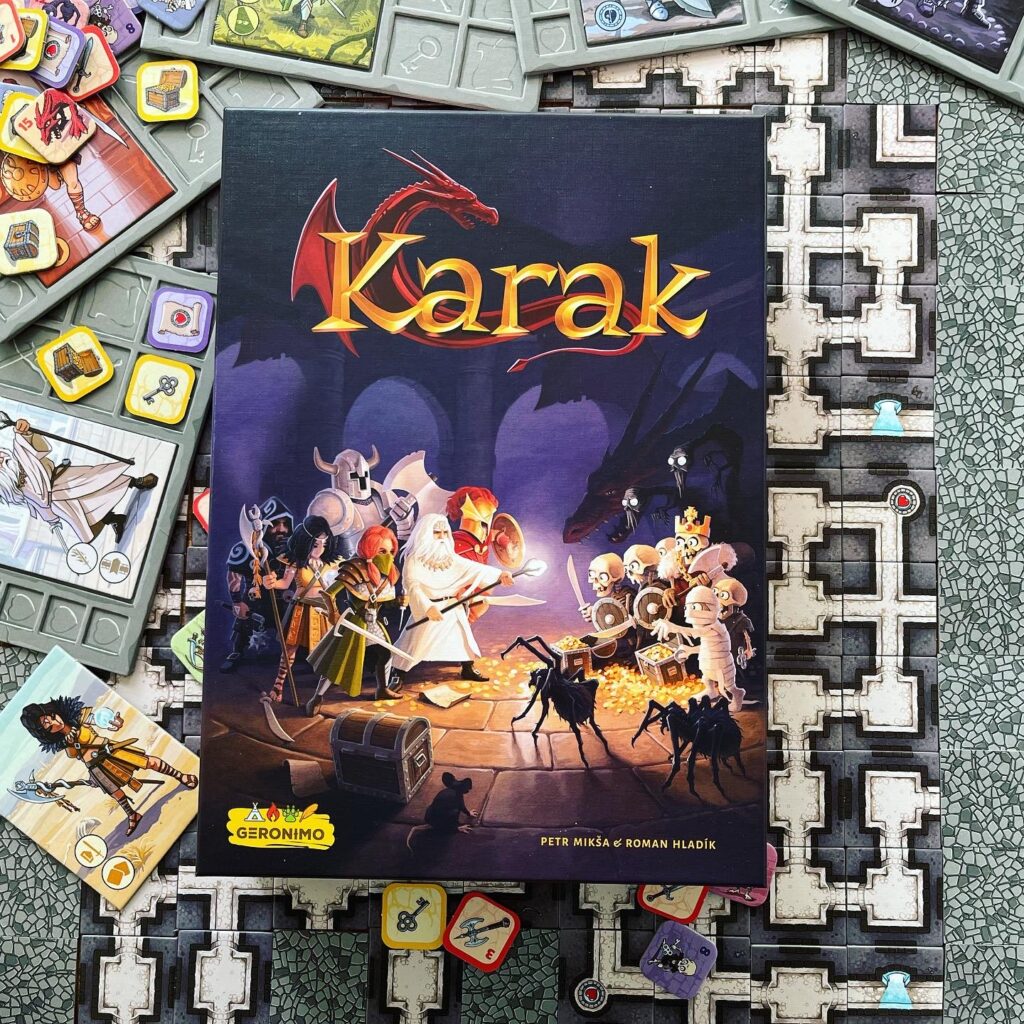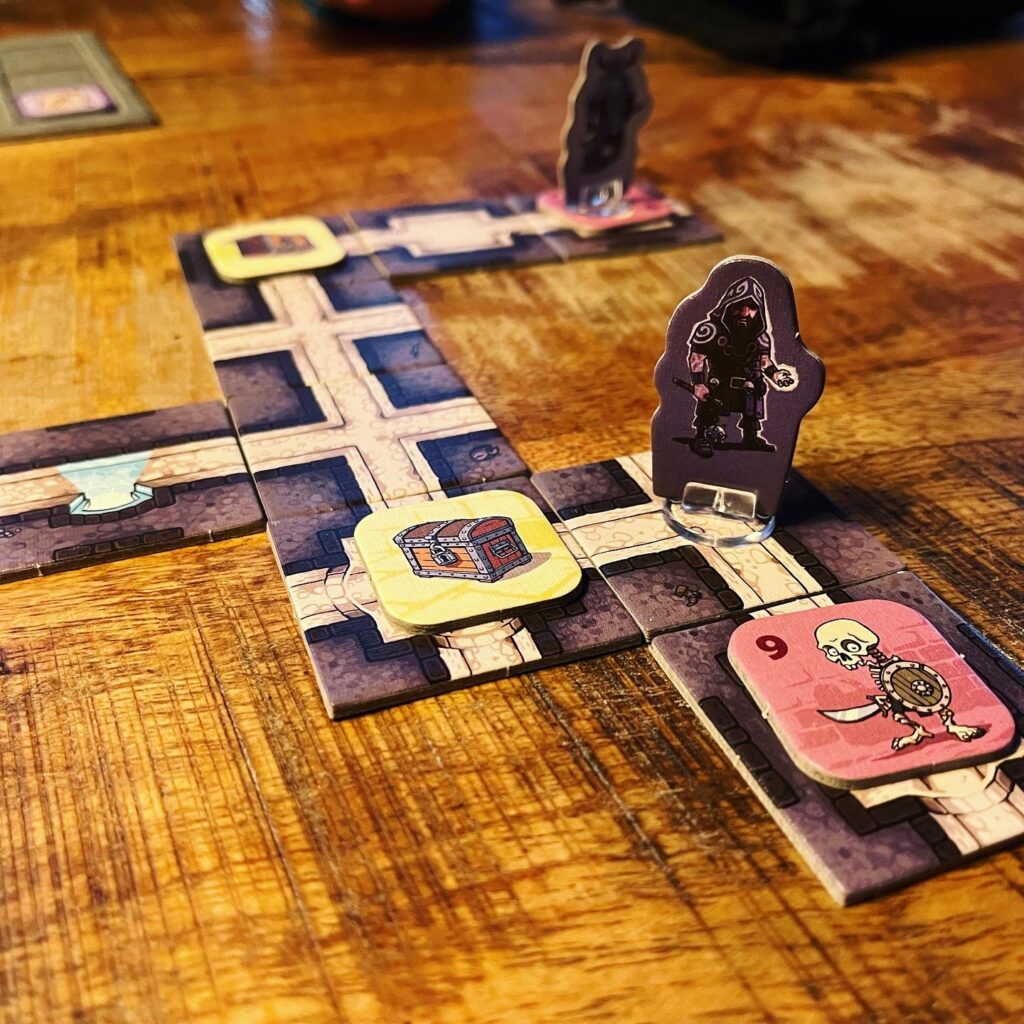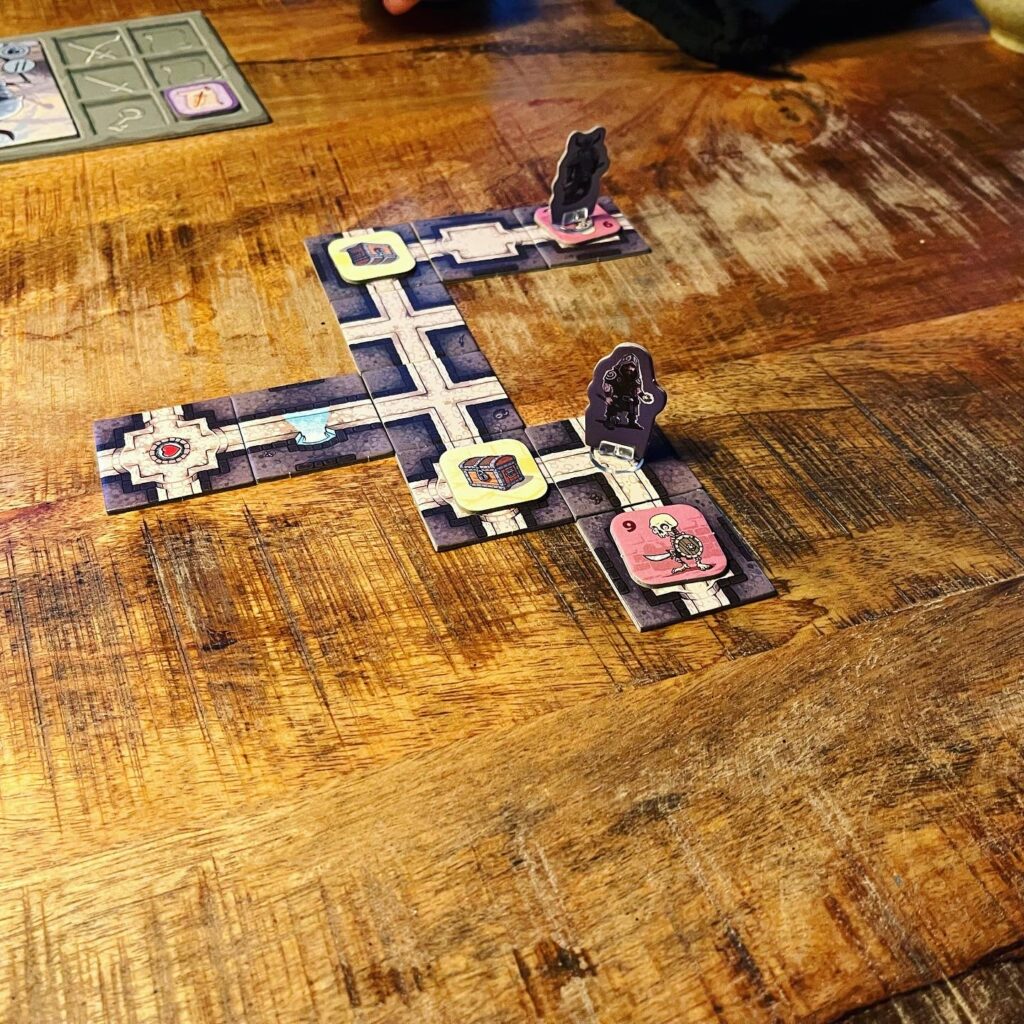Beneath the ruins of what was once Karak Castle, lies a dark and mysterious catacomb consisting of many halls and corridors. Thee who do not fear, ye must travel to the catacombs of Karak overrun with monster and undead, for there are uncountable rumours that the ramshackle castle of Karak holds chests full of gold and gems. However, as the stories say: a Dragon guards these riches. In this family-friendly adventure board game, players each take on the role of one of these fearless heroes. Will you be able to leave the catacombs unharmed?

The board game Karak is an entry-level dungeon crawler that is suitable for even the very youngest players. However, don’t be put off by the somewhat bulky rulebook. The rules contain a lot of (fun and light-hearted) background story and a wide selection of examples. The game itself is simple in structure and easy to learn. So how is the game played?
Each player takes a hero with special skills and players are basically ready to play! The dungeons of Karak contain a large number of corridors and halls. These are depicted on tiles that players playfully explore the catacombs with. Each turn, a player may move up to four tiles. Players can place new tiles to discover these. The tiles are drawn blindly from the drawing piles. If a hall is turned over, the active player may draw a tile from the monster and treasure bag. Treasures or monsters are placed in the hall. If the player possesses a key, the treasure chest can be opened. Monsters must be defeated and leave loot once defeated. Defeating monsters provides new equipment, magic spells, keys or treasures. Please note: players only have limited storage space! Everything that players cannot or do not want to carry remains in the catacombs for other players to pick up.

If a player has to fight a monster, he or she rolls two dice and adds any bonuses from equipment. This is the player’s attack power. With spells and special abilities, players can influence their attack power to some extent. If a player has less attack power than the monster, this player loses hearts and is moved back to the previous tile. However, if the player has more attacking power, he does not lose any hearts, but is moved back to the previous tile. If the player has more attack power, this player defeats the monster. The monster tile is turned over to show the reward. If a player loses all his or her hearts, this player must skip the next turn to heal.

The game is over as soon as a player defeats the dragon. Players now count all treasures (the treasure you get when you defeat the dragon is worth more) and the player with the most treasures wins!
Karak is a fun family game and a great entry point to heavier adventure games. Young players will enjoy trying out the different heroes and going on adventures. The gameplay itself is simple. Because of this, it may have a bit fewer options for the frequent players. Each turn is basically similar: players may walk and discover new tiles and probably fight a monster. Frequent players, however, are not the audience of the game. Laying tiles and building the catacombs creates a nostalgic feeling of discovery, and because of this, the game reminded me a bit of the feeling of the games I played as a child in the 90s. Which monsters will enter the game and when is unknown and the battles with dice create tension. You can make your hero stronger, but you are never quite sure if you can face a monster. Risk assessment is therefore an important game element. Karak is a very fine adventure for young and old – and also entertaining for in-between play.





